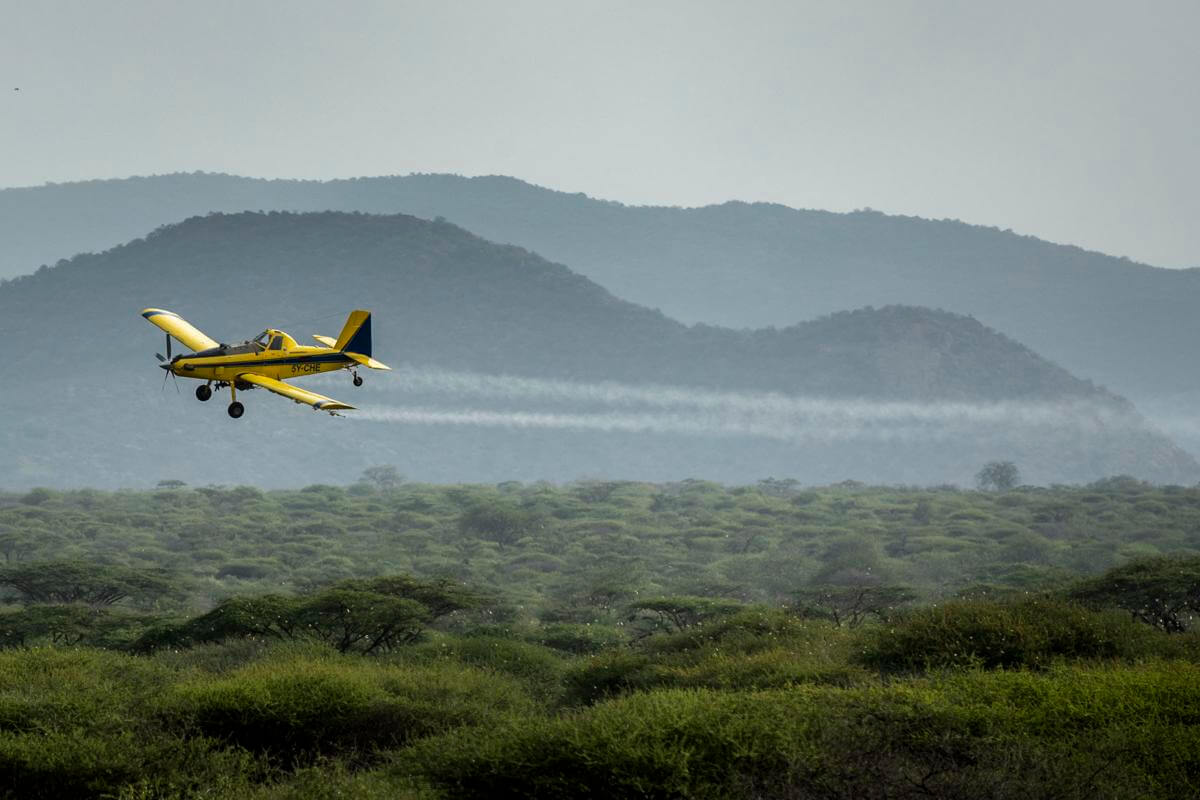As the locust invasion continues to spread and destroy swathes of land and produce in East Africa, the Kenyan government launched a large-scale spraying operation in the Wajir, Samburu, and Marsabit counties, where locust swarms have laid eggs that have now hatched.
The chemicals being used are fenitrothion, chlorpyrifos, fipronil, deltamethrin, diflubenzuron, teflubenzuron, and triflumuron. The decision has been supported by the Information and Forecasting Officer for the Desert Locust Control Organization in East Africa (DLCO-EA), Mehari Tesfayohannes Ghebre.
The swarms began wreaking havoc in late December, and locals have tried in vain to get rid of them using a wide variety of means, including firearms. Although the Kenyan government set aside roughly $2 million to combat the invasion, its response was delayed due to a lack of pesticides and spraying planes, allowing the swarms to spread and reproduce at rapid rates.
Kenya is experiencing its worst outbreak in 70 years, and has seen huge losses to vital crops such as maize, khat, cowpeas, and beans. Agriculture contributes to roughly one-third of East Africa's GDP, and accounts for over 60% of jobs in the region. In Ethiopia alone, locusts have thus far consumed vegetation on more than 65,000 hectares of land, including coffee and tea crops, which account for roughly 30% of its exports. In Kenya, the situation is even worse as at least 70,000 hectares of land have been affected.
The desert locust swarms are traveling across continents and have even reached India, which is experiencing its worst locust invasion in 60 years. They have also been seen in Uganda, Tanzania, South Sudan, Saudi Arabia, Kuwait, Bahrain, Qatar, and Iran.
Thus, Kenyan authorities have been left with little choice but to spray chemicals. Even so, there are only five planes currently spraying.
However, critics of the move argue that the chemicals used also kill ‘useful’ insects, such as bees and beetles. Without bees, there is no pollination, which may massively unsettle the ecosystem and create dire unforeseen consequences.
The Department of Agriculture says that the products being used are safe for humans and animals as the chemicals are sprayed in “ultra-low volumes”, and evaporate after 24 hours.
Image Source: Effingham Daily News

